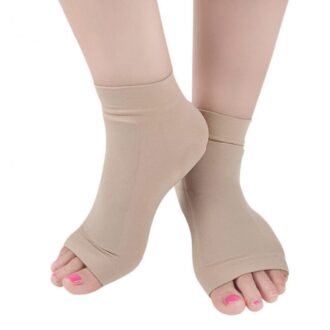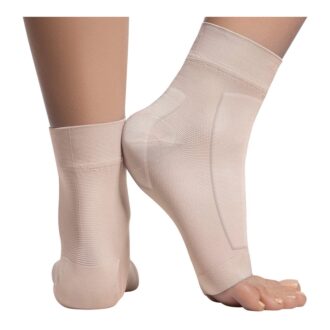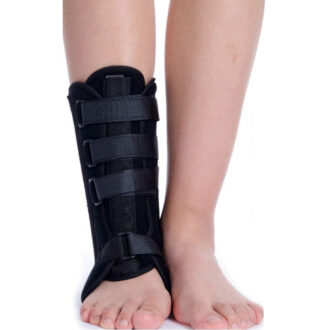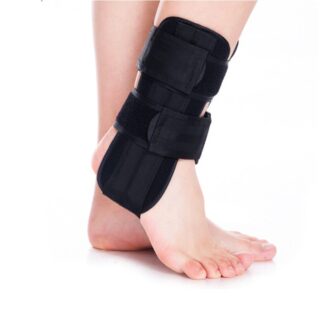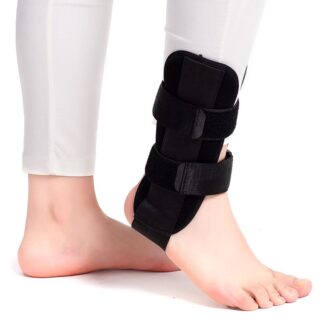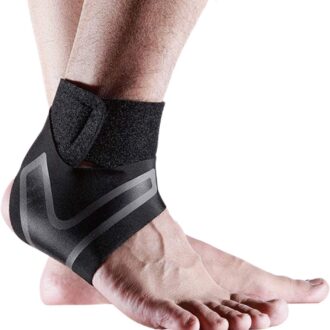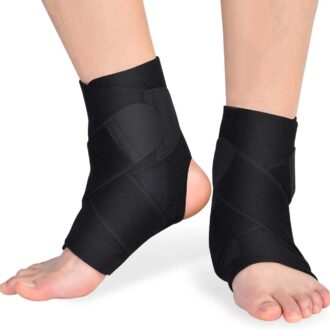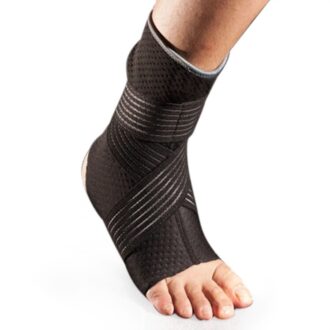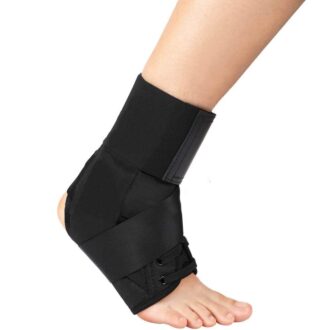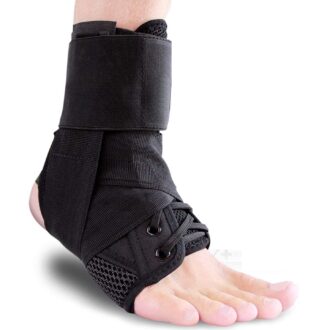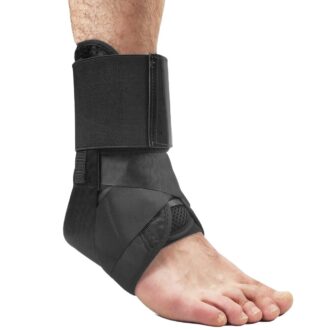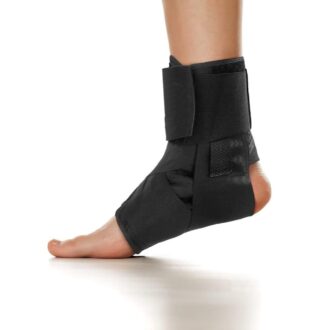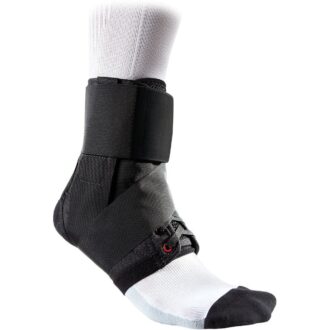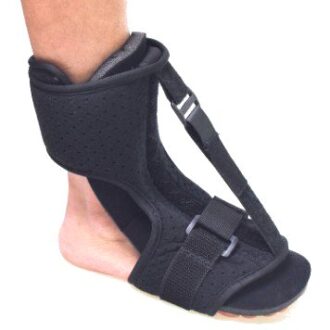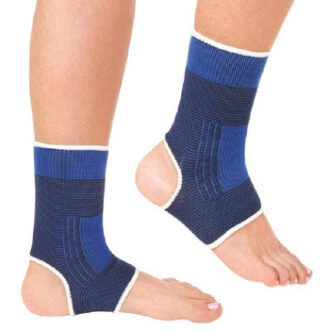No products in the cart.
Ankle Supports
Step into Comfort with NuovaHealth Ankle Supports & Braces
Did you know that over 1.5 million people in the UK suffer from ankle injuries each year according to the NHS? Don’t wait until it’s too late—take action now! At NuovaHealth, we offer an extensive range of ankle supports and braces that can help you move towards a pain-free future.
The Power of Ankle Supports & Braces
Discover the incredible benefits of our ankle supports and braces. These innovative medical devices are meticulously designed to alleviate pain, accelerate recovery, and enhance mobility. But how exactly do they work?
Our ankle supports and braces wrap snugly around your ankle and feature reinforced, semi-rigid stabilizers that provide excellent stability, preventing unnatural movements that could lead to injury or worsen existing conditions. By keeping your foot and leg properly aligned, they help alleviate strain on essential tendons, ligaments, bones, and muscles. This not only offers immediate relief but also strong protection against future injuries.
What more could you ask for? The soothing benefits of compression, for one. Let’s explore the wonders of compression. When gentle pressure is applied to the affected area, it enhances blood circulation, removes inflammatory byproducts, and accelerates the healing process. A well-fitted ankle support or brace from our range can significantly reduce pain and swelling, allowing you to get back on your feet in no time.
Our advanced designs often incorporate ergonomic contours that follow the natural shape of your ankle and foot. This ergonomic design maximizes comfort and minimizes bulk, making the brace less intrusive and easier to wear with regular footwear.
But there’s even more to consider. Many of our ankle supports and braces feature breathable materials that wick away moisture, keeping your skin dry and comfortable during extended wear. This feature is particularly beneficial for athletes or individuals who wear their braces for long periods, as it helps prevent skin irritation and discomfort.
Additionally, many of our ankle supports come with adjustable straps, allowing for a customized fit tailored to your specific needs. This ensures that you receive the optimal level of support and compression, enhancing both comfort and effectiveness. The ability to adjust the tightness means you can have a snug fit during high-activity periods and a looser fit when resting, providing versatility in various situations.
Experience the perfect blend of comfort and functionality with our high-quality ankle supports and braces, and take a confident step towards a pain-free, active lifestyle.
Conditions & Injuries Ankle Supports Can Help Treat & Prevent
Ankle supports aren’t just for those in pain—they’re also a savvy preventative measure. Wearing an ankle brace can shield you from a variety of common issues…
Tailored Solutions for Every Need
At NuovaHealth, we understand that every individual’s needs are unique. That’s why we offer a wide range of expertly designed ankle supports, braces, and night splints made from high-quality medical-grade materials. Whether you’re dealing with sprains and strains, fractures, Achilles tendonitis, foot drop, plantar fasciitis, arthritis, or just general discomfort, we have the perfect solution for you.
Our range includes our own branded ankle supports and braces, as well as a selection of premium brands, including FootReviver. Each product in our collection has been carefully tested to ensure it truly helps in providing the support and relief you need.
It’s time to step into comfort and take control of your well-being. Explore our range of ankle supports and find your perfect fit today!
Disclaimer:
While our ankle supports and braces are designed to provide relief and support, if you are experiencing persistent ankle pain or have sustained an injury to your ankle, it is crucial to consult a doctor. Only a healthcare professional can provide a proper diagnosis and identify the root cause of your discomfort, which is important for effective treatment. They can also advise you on whether wearing an ankle support or brace from our range is right for you. Your health and well-being are our top priority, and we are committed to providing you with products that will truly help.
Gel heel Protector Ankle Sleeves For Lace Bite, Blisters, Plantar Fasciitis, Heel Spurs & Achilles Tendonitis
- 1x Pair of Heel Protector Socks designed to help protect and support your heels and ankles
- One size fits all
- For both Men & Women
- Recommended for helping ease, treat and prevent Lace Bite, Blisters, Skin Ulcers, Calluses, Plantar Fasciitis, Heel Spurs, Haglunds bump, Bursitis and Achilles Tendonitis
- Features 2 silicone gel pads on both the front and back on the socks to help protect your heels from excessive pressure, shock and impacts
- Ideal for people with damaged and injured heels and ankles to prevent further damage and to help ease pain
- Stops lace bite whilst wearing Walking boots, Ice Skates and Riding Boots by stopping your shoes from digging into the front and back of your heels
- Soft padded gel minimises friction on your heels and ankles stopping Abrasions, Blisters, Skin Ulcers and Calluses from developing
- Provides soothing compression that boosts blood flow to your heels helping speed up the natural healing process of damaged tissue whilst reducing swelling and inflammation and eases aches and pains
- Helps support and stabilize your feet in the correct position and restrict movement which could damage your feet and ankles
- Includes a full 30 day money back guarantee!
£10.99inc VATGel Padded Heel protector Sleeve Socks for Lace Bite Protection, Skating, Hockey, and Tall Boots
- 1x Pair of Gel Padded Heel protector Sleeve Socks for Lace Bite Protection, Skating, Hockey, and Tall Boots
- One size fits all (Stretch fit)
- Slip easily and securely around your feet stopping the socks moving around and irritating your feet whilst wearing
- The double sided gel pads located on the front and back of the heels of the socks help protect your heels from excessive pressure, shock, abrasions and friction
- Ideal for stopping Lace bite, Plantar Fasciitis, Achilles tendonitis, Blisters, Ulcers, Calluses and Heel spurs from developing
- Can be worn with or without shoes or additional socks and can be worn with regular shoes, Trainers, as well as Skating, Hockey, and Tall Boots
- Gives your feet and heels targeted support to take strain and pressure off your feet and help you to avoid common overuse injuries such as Plantar Fasciitis and Achilles tendonitis
- Provides soothing compression to your heels boosting blood flow to your feet to help ease aches and pains, reducing inflammation and swelling and speeding up the natural healing process of damaged tissue after sustaining a foot injury
- Made from lightweight breathable fabric with moisture wicking properties to keep your feet sweat and odour free and feeling fresher for longer
- Ideal for wearing whilst running, exercising and playing sports to help keep your feet and heels supported and protected
- Includes a full 30 day money back guarantee!
£10.99inc VATAnkle Splint Foot Brace & Post-Op Cast Support for Ankle Sprains, Fractures, Achilles Tendonitis & Drop Foot
- 1x Ankle Foot brace designed for Sprains, Strains, Fractures, Achilles Tendonitis, Plantar Fasciitis, Drop Foot, Post-Op Cast Support and Injury Protection
- For both Men & Women
- Available in a range of different sizes:
- Small 3-5 (Approx. UK Shoe Size)
- Medium 5-8 (Approx. UK Shoe Size)
- Large 8-11 (Approx. UK Shoe Size)
- Specially designed to protect, support and compress your foot and ankle to help ease aches and pains and improve injury recovery
- Supports your foot in a straight position and prevent movement which can twist, sprain, strain and damage your foot, ankle and lower leg
- Provides soothing compression to help boost blood flow to your foot helping to reduce inflammation and swelling, ease pain and speed up the natural healing process of damaged tissue
- Wearing this brace can help to improve foot function, strength, mobility and stability after sustaining a foot or ankle injury
- Made from lightweight, breathable materials with a non-bulky construction and can be worn with or without shoes
- Includes full 30-day money back guarantee!
£14.99inc VATFootReviver™ Achilles Tendonitis Support Brace
- 1x Achilles Tendonitis brace designed by FootReviver™ to help protect support and ease your Achilles tendon
- For both Men & Women
- Available in a range of different sizes:
- Small 3-5 (Approx. UK Shoe Size)
- Medium 5-8 (Approx. UK Shoe Size)
- Large 8-11 (Approx. UK Shoe Size)
- Features multiple secure buckled straps that are fully adjustable and allow you to quickly and easily adjust the level of support, compression and the fit of the brace and keep the ankle brace securely in place
- Recommended for wearing after sustaining a foot or ankle injury and ideal for use during the P.R.I.C.E injury recovery protocol for faster and more effective injury recovery for a wide range of injuries and conditions including Ankle Sprains and Strains, Fractures, Achilles Tendonitis, Foot drop, Plantar Fasciitis, Arthritis as well as general aches and pains in the foot and ankle
- Supports & stabilizes – Features side stabilizer splints that help realign and hold your foot and lower legs in a straight position improving the stability and function of your foot and ankle promoting correct movement and limiting movement which could cause further damage to your Achilles tendon
- Eases strain and pressure off your foot and prevent excessive load from damaging your foot and causing common overuse injuries such as Plantar Fasciitis, Heel, Spurs, Achilles tendonitis & Shin Splints from occurring
- Soothing compression speeds up healing – Provides soothing compression to your foot and ankle helping to ease aches and pains, reduce swelling and inflammation and boosts blood flow to your foot providing nutrient and oxygen rich blood to your cells speeding up the repairing of damaged tissue
- Made from non-bulky, lightweight and breathable materials and can be worn discreetly with or without shoes
- Ideal for wearing when running, playing sports or exercising to protect your foot from injury
- Includes full 30-day money back guarantee!
£14.99inc VATAnkle Stabilizer Splint
- 1x Ankle Stabilizer Splint specially developed by the foot experts at FootReviver™ to help protect, support and ease ankle sprains, strains and injuries
- Available in sizes 3 different sizes:
- Small 3-5 (Approx. UK Shoe Size)
- Medium 5-8 (Approx. UK Shoe Size)
- Large 8-11 (Approx. UK Shoe Size)
- Fits on either the right or left foot with total ease using the two adjustable straps that keep the ankle splint securely in place
- Recommended for treating and easing ankle and foot injuries including Ankle Sprains, Strains, Fractures, Flexor hallucis longus, Achilles tendonitis or tendinopathy, Posterior tibialis, Anterior tibialis as well as Osteochondritis dissecans, Gout and Arthritis.
- Ideal for wearing during the P.R.I.C.E injury recovery protocol to help protect, rest, compress and support your ankle after sustaining an injury for faster and better injury recovery
- Designed to straighten and support your foot and ankle in the correct position and prevent further injury
- Features 2 metal side stabilizing splints that help to immobilize your your ankle preventing movement which could twist, sprain or damage your ankle and impede your recovery
- Provides soothing compression to your ankle, heel and foot helping stimulate blood flow to reduce inflammation and swelling, ease aches and pains and provide fresh oxygenated and nutrient rich blood to cells found in key tendons, ligaments and muscles found in your ankle to help speed up the natural healing process
- The lightweight and non bulky design means you wear this ankle splint with or without shoes
- Soft comfortable padded inside cushions and absorb shock helping keep your ankle comfortable and protected
- Includes a full 30 day money back guarantee!
£12.49inc VATAnkle Brace for Sprains, Strains, Fractures, Achilles Tendonitis & Heel Pain
- 1x Ankle Brace Post-Op Cast Support for improved injury protection and recovery
- For both Men & Women
- Available in sizes 3 different sizes:
- Small 3-5 (Approx. UK Shoe Size)
- Medium 5-8 (Approx. UK Shoe Size)
- Large 8-11 (Approx. UK Shoe Size)
- Features 2 secure buckle straps that keep the brace firmly in place and can easily be adjusted for the best fit and support
- Ideal for P.R.I.C.E injury recovery protocol to keep your ankle protected, supported and compressed after sustaining a foot or ankle injury
- Recommended for treating a wide range of foot and ankle injuries including Sprains, Strains, Fractures, Achilles Tendonitis and Tendinopathy, Posterior tibialis, Anterior tibialis as well as Osteochondritis dissecans, Gout and arthritis
- Features 2 aluminium splints designed to Straighten, immobilize and support your foot and ankle in the correct position helping prevent pressure and movement from causing more damage to your injured foot
- Provides compression that helps ease aches and pains, reduce swelling and inflammation and improves blood circulation to help speed up the natural healing process of damaged tissue
- The soft padded inside cushions and absorbs shock and impacts protecting your foot and ankle from further damage
- The lightweight slim design means that you can wear the brace with or without shoes
- Includes a full 30 day money back guarantee!
£12.49inc VATHeel Support Braces
- 1x Pair of Heel Support Brace that have been specially designed to provide extra support, stability, protection and comfort to your heels
- For Both Men & Women
- Available in a range of different sizes with fully adjustable straps which wrap simply around your heel providing targeted heel support and protection where you need it the most
- Perfect for people who are always on their feet and suffer from tired, aching heels – The padded design helps to absorbs shock and prevents pressure points from building up underneath your heels for long lasting protection and comfort
- Recommended for treating and easing Heel Spurs, Plantar Fasciitis, Achilles Tendonitis, Foot and Ankle Instabilities, Sprains, Strains and Arthritic Joint Pain
- Provides soothing compression that boosts blood flow to your feet that improves injury recovery by easing heel pain, reducing inflammation and swelling as well as helping to speed up the healing process of injured ligaments, tendons and muscles
- Made form lightweight, breathable materials that keep your feet feeling fresh
- Ideal for wearing when running, exercising and playing sports to help give your feet added support and protection against foot and ankle injuries
- Includes a full 30 day money back guarantee if you are not 100% satisfied with your purchase!
£10.99inc VATAnkle Wraps
- 1x Ankle Wrap support brace for protection support and stabilizing your foot and ankle
- For both Men & Women
- Available in a range of different sizes with laces and adjustable straps for the perfect fit
- The Secure fastenings keep the brace firmly in place and the adjustable straps wrap around your ankle and foot to provide a custom level of support
- Helps strengthen injured foot and ankles by supporting and stabilizing your ankle joint in the correct position and promoting better ankle function
- Provides targeted support that helps improve foot and ankle function and prevent movement which could cause injury
- The soothing Compression helps boost blood flow to your foot and ankle helping reduce muscles fatigue and aid injury recovery by reducing swelling, and inflammation easing pain and speeding up the natural healing process of injured ligaments, tendons and muscles
- Comfortable to wear all day long – With a soft padded inside, breathable ventilation holes and moisture wicking technology this ankle brace is ideal for prolonged use and will keep your foot and ankle feeling comfortable, sweat free and feeling fresh
- Ergonomically designed to be lightweight and non bulky – Ideal for wearing whilst exercising, running and playing sports
- Includes a full 30 day money back guarantee if you are not 100% satisfied with your purchase!
£9.99inc VATAnkle Compression Sleeve
- 1x Ankle Compression Sleeve designed to protect, support and ease pressure off your ankles
- For both Men & Women
- Available in sizes Small, Medium & large – Features fully adjustable straps that wrap around your feet and ankles giving you the best possible fit and a custom level of support
- Ideal for treating a range of foot and ankle injuries including Arthritis, Achilles Tendonitis, Plantar fasciitis, Ankle Sprains and Strains
- Designed to improve the biomechanics and function of your feet to help you avoid injury
- Recommended for PRICE injury recovery protocol (Protect, Rest, Ice, Compression, Elevation)
- Provides compression that helps soothe pain and increase blood flow to your ankles helping reduce swelling and speed up the natural healing process
- Helps protect your injured ankles by supporting them in the correct position to prevent further damage and injury
- Made from lightweight & breathable Neoprene material with moisture wicking technology that will help keep your ankles feeling fresher for longer
- The perfect choice for wearing whilst Running, Exercising or playing sports such as Football, Rugby & Basketball
- Includes a full 30 day money back guarantee if you are not 100% satisfied with your purchase!
£9.99inc VATAnkle Splint
- 1x Ankle Splint ideal for treating and easing a number of foot and ankle injuries
- For both Men & Women
- Available in many different sizes to suit every foot type
- Fully adjustable, featuring tie up laces and secure straps that keep the ankle splint secure and allow you to adjust the support and compression quickly and easily according to your specific needs
- Recommended for treating ankle and foot injuries including Ankle sprains, Strains, Fractures, foot and ankle instabilities, Achilles tendinitis, Plantar Fasciitis, Heel spurs, Foot drop and Arthritis
- Ideal for injury recovery – Designed to straighten and immobilize your foot and ankle helping to prevent movement which could cause further damage and injury
- Holds and supports your foot and ankle in the correct position helping to improve biomechanical function and ease strain and pressure off your foot
- Provides soothing compression that makes this ankle splint ideal for use during the PRICE injury recovery protocol, The compression will help to ease pain, reduce swelling and inflammation and boost blood flow you flow helping to speed up healing
- Designed to be lightweight and non bulky and can be worn with or without shoes
- Ideal for wearing whilst running, exercising or playing sports
- Made from breathable moisture wicking materials that prevent the build up of sweat and odour
- Includes a full 30 day money back guarantee if you are not 100% satisfied with your purchase!
£13.99inc VATAnkle Support Brace
- 1x Ankle Brace Support designed to treat ankle injuries and ease aches and pains
- For Both Men & Women
- Available in a range of different sizes with secure adjustable straps and laces that allow you to adjust the ankle brace to the most suitable fit, support and compression that you need
- Ideal for easing and treating Ankle Sprains and Strains, Achilles Tendonitis, Plantar Fasciitis, Fractures, Foot drop, Arthritis, as well as general aches and pains in the foot and ankle
- Designed to stabilize and support your ankle and foot in the correct position and improve the way that they function to help prevent injury
- Speeds up injury recovery and ideal for PRICE injury protocol – Provides soothing compression that helps to boost blood flow to your ankle and foot aiding the natural healing process and reducing inflammation, swelling, aches and pain
- Made from lightweight materials with a non bulky design means you can wear this ankle brace with or without shoes
- The moisture wicking technology and breathable ventilation holes added to this ankle brace allows your skin to breathe as you wear the ankle brace reducing the build up of sweat and odour and keeping your feet fresher for longer
- Ideal for wearing whilst Running, Exercising or playing sports such as Football and Rugby to protect you from injury
- Includes a full 30 day money back guarantee if you are not 100% satisfied with your purchase!
£13.99inc VATAnkle Sprain Brace Support
- 1x Ankle sprain Brace Support for easing and treating ankle sprains
- For both Men & Women
- Available in a range of different sizes with adjustable straps and laces to help you find the perfect fit
- Can be worn for helping treat and ease a range of different injuries and conditions including Ankle sprains, Strains, Fractures, foot and ankle instabilities, Achilles tendinitis, Plantar Fasciitis, Heel spurs, Foot drop and Arthritis
- Provides targeted support that improves ankle function and efficiency preventing excessive strain and pressure on your ankle and foot
- Holds and immobilizes your foot and ankle helping prevent movement which could twist, sprain or strain your ankle joint
- Provides soothing compression that helps ease ankle sprain pain, inflammation and swelling as well as increase blood circulation to your injured ankle helping to speed up the natural healing process
- The lightweight and non bulky design makes this ankle brace the perfect choice for wearing whilst running, exercising and playing sports
- Ideal for wearing for prolonged periods thanks to the soft padded inside which ensures maximum comfort and shock absorbing protection
- The breathable design and moisture wicking technology helps to draw moisture away from your skin and keep your foot sweat free and dry
£13.99inc VATAchilles Tendonitis Brace
- 1x Achilles Tendonitis Brace designed to support, stabilize and protect your Achilles tendon
- For both Men & Women
- Available in a range of different sizes to fit any foot type
- Can be worn with or with out shoes thanks to its lightweight and non bulky design
- Ideal for treating a range of ankle and foot injuries including Achilles Tendonitis, Ankle instability, Sprains, Strains, Minor Fractures, Plantar Fasciitis, Foot Drop and Arthritis
- Features fully adjustable straps that wrap securely around your ankle keeping it stabilized and protected with a custom level of support and compression
- Improves and supports proper ankle function and prevents movement which could twist, sprain or strain your ankle and cause further damage and injury
- Provides soothing compression that boost blood flow to your ankle and foot helping to improve injury recovery by easing pain, reduce soreness, swelling and inflammation and speeding up the natural healing process of damaged ligaments, tendons and muscles
- The breathable ventilation holes and moisture wicking fabric keeps your foot and ankle dry and sweat free
£13.99inc VATAnkle Stabilizer Brace
- 1x Ankle Stabilizer Brace designed to supports and protects your ankle from pain and injury
- For both Men & Women
- Available in a range of different sizes – Featuring tie up laces and ankle wraps that allow you to quickly and easily adjust to the correct the fit, support and compression accordingly
- Designed to immobilize and stabilize and support your ankle and foot in the correct position helping to ease pressure and strain off your foot and prevent common ankle injuries
- Ideal for injury recovery and rehabilitation – This ankle brace is ideal for use during the PRICE injury recovery protocol as it provides soothing compression that helps stimulate blood flow to your foot helping to reduce inflammation and swelling, ease pain and speed up the healing process of injured muscles, tendons and ligaments
- Great for treating and easing a plethora of ankle and foot injuries including Ankle sprains, Strains, Fractures, foot and ankle instabilities, Achilles tendinitis, Plantar Fasciitis, Heel spurs, Foot drop and Arthritis
- The lightweight and non bulky ergonomic design means this ankle brace can be worn with or without shoes and is ideal for wearing whilst exercising, running and playing sports such as football and rugby
- Made from breathable moisture wicking materials that keep your foot sweat free and feeling fresher for longer
- Includes a full 30 day money back guarantee if you are not 100% satisfied with your purchase!
£13.99inc VATFoot Drop Brace Support
Foot drop is a muscular weakness or paralysis in your foot that makes it more difficult to lift the front part of your foot and toes and causes the forefoot to drop unexpectedly during the gait cycle. Foot drop is most commonly caused by nerve damage in the leg, or the result of a brain or spinal injury effecting the nerves found in the foot causing paralysis or weakness in the muscles controlling the forefoot.
Foot drop can make you more susceptible to falls and foot and lower limb injuries such as plantar fasciitis, and Achilles tendinitis, and knee tendinitis due to irregular gait placing abnormal pressure on your lower limbs. Wearing this specially designed foot drop brace that you can wear night or day can help correct the way that your foot and ankle function reducing the effects of foot drop.
- 1x foot & ankle support splint brace for Foot drop.
- Helps improve walking by controlling the way your foot and ankle moves by Straightening and holding your foot and ankle in the correct position as you walk.
- Designed to ease pressure and strain off the ankle and foot ligaments helping you to avoid common foot injuries such as plantar fasciitis and Achilles tendinitis.
- For everyday use & and can be worn at night to ease pain and discomfort.
- Can be worn with or without shoes.
- One size fits all.
- Made from durable shock resistant EVA material.
- Includes a full 30 day money back Guarantee.
£11.99inc VATAnkle Support Compression Sleeve
- 1x pair of Ankle supports designed to support and protect your ankles.
- Specially designed to prevent movement of the ankle that could cause further damage to weakened and injured ankles.
- The perfect choice for runners and athletes wanting to protect their ankles from injury.
- Provides support, stability and shock absorption where you need it the most
- Ideal for ankle sprains, strains, fracture’s and achilles tendinitis.
- Compression designed to boost blood flow to your injured ankle helping to speed up the healing process.
- One size fits all for both men and women
- Machine washable
- Made from lightweight, breathable medical grade elastic material for the best comfort and support.
- Includes a full 30 day money back guarantee
£6.99inc VAT
